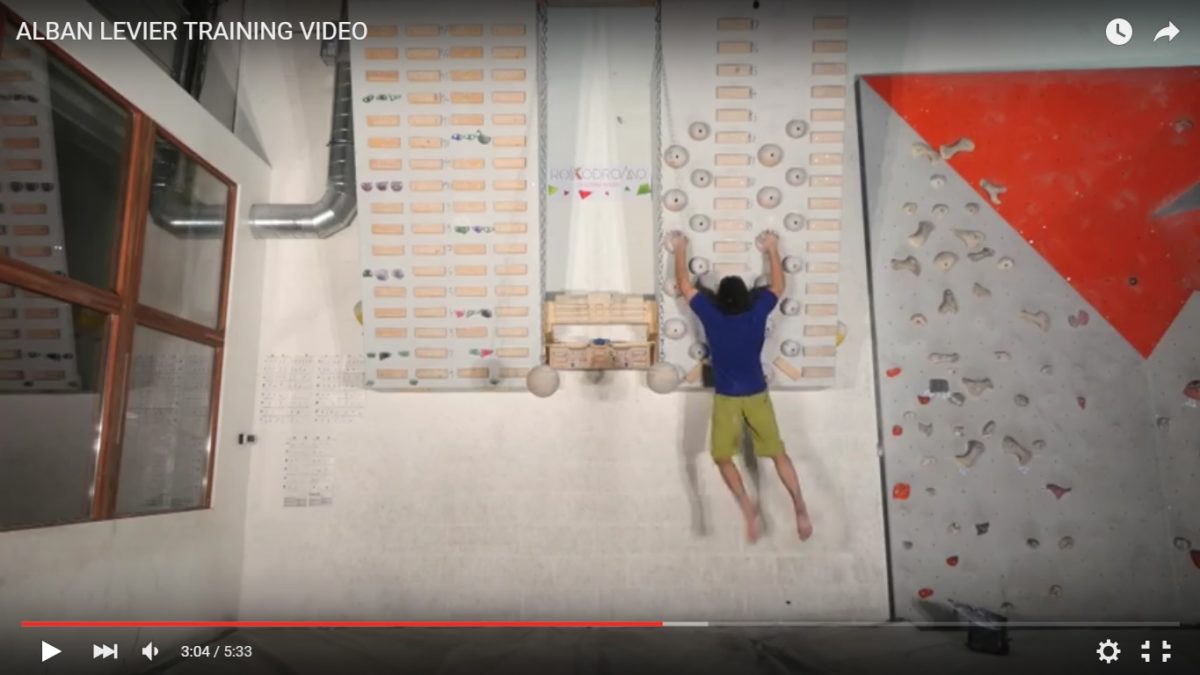Training: Get Strong, Focus on What Can Help

Climbing at our limit presents us with a dilemma: Is it the sequence we find or the strength we need to develop that is holding us back from doing the climb? No matter the grade we are climbing, this unseen challenge is ever present.
Our initial goal is to get through our hardest climb by any means necessary. The interesting part is what we decide to do from here, do we see ourselves as trapped by this single solution and think we must become stronger to succeed?
Without creativity, jumping to this conclusion of increasing strength can lead to a frustrating, limiting and possibly injurious outcome. There are other options besides getting stronger.
Strength is sometimes needed to makes gains but let’s avoid running to the hangboard before looking at creative strength as a valuable resource for the challenge.
Every route you climb is an opportunity to leverage creativity as your greatest tool. Use your size, flexibility and skills.
Creativity, singular focus and being critical all feel hard to see the benefits from for the first couple times you work with them. Keep at it and stay positive! These tools can be applied to life in general and improve with practice.
Practice Creating Options: Grab a pencil or your phone and find an easy climb. Do a lap in your normal climbing style with one subtle additional focus. Ask yourself when back on the ground, how much did my feet support me during that climb? With this noted, start the creative process and see how many other options you can find to get up the climb.
Continue writing down each option with a quick detail about how it was different and then rate it by feel on it’s effectiveness of using your lower body for that lap. For example, “Using high feet in this option really allowed me to stand with my legs instead of pull with my arms for each move.” Scale this drills intensity by increasing the difficulty of the climb you are trying so that coming up with options requires more effort and creativity.
Become a Single-Tasker: Forget multitasking, Single-tasking is where deliberate practice resides and lasting improvement hides. Cultivate this by deciding prior to a climb what your main focus will be. The more specific, the better you will be able to focus on it and understand the subtleties of how you perform the move. For example, one of the bigger concepts within climbing technique, opposite hands go with opposite feet, is challenging because even when scaled down to its basic form there are still several things going on.
Try setting your attention to solely focus on an opposite hand to every foot placement and work on making it an ingrained habit as well as looking for ways your body can use this concept advantageously. Experiment and learn all climbing techniques with this method. Try different positions until you feel confident in where and when the technique can best be used and when it won’t help your situation.
Also keep in mind that you can’t always see all of what you are doing. By asking a friendly observer to help hold you accountable when practicing, cultivating your singular focus will become easier. Have them let you know during your climb when you’ve strayed away from what you set out to do.
Be a Critic: Would you say watching people climb is far easier to criticize than being critical of ourselves while we’re hanging on for dear life? Maybe the ability to puppeteer our climber from the comfort of a belay or spot comes from not being occupied with the challenges of climbing which allows us to see options more clearly.
Asking ourselves subtle questions prior to spraying our insights from a distance can make our suggestions more relevant to the challenges they are facing. Does my advice consider the climber being supported from their lower body for the move I am suggesting? Are they balanced, or moving towards balance? Is it the holds they are on that are challenging them or the holds they are going for that need the solution to focus on?
Then, to get even more value from your advice, take it yourself and try what you suggest. Hold yourself accountable for the option you offered and test whether it is a good option for moving through the crux.
Some of my hardest climbs demanded more creativity than strength training. From finding a new sequence that required doing one legged squats for a month in order stand up while making use of an undercling above my head. Exploring on top rope for an hour to eventually find a way through that involved closing my eyes and focusing on moving my hips eight inches to the left in order to perform a mantle and hand-foot match easily. Using my knee as a foot hold and standing up on it and realizing how easy that can make a hard move.
The cheekily named Doer, Not a Critic 5.11c in the New River Gorge teaches climbers what a knee can offer towards making a hard sequence easy. Thinking about the name of this route offers us one other important insight about the challenges we face when learning while climbing.
It’s hard to do something at our limit and think about what we’re doing at the same time. Yet the only way we can improve and get better results is by becoming the critic that disappears when we just do it.


